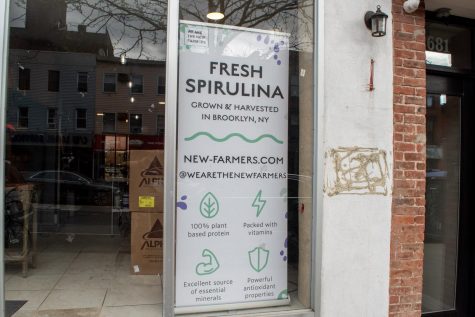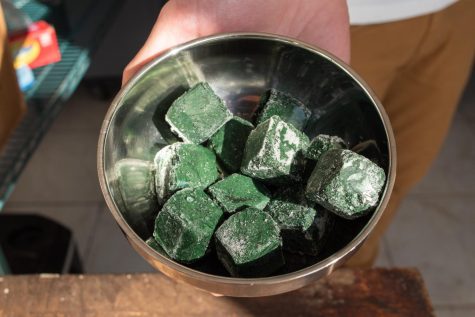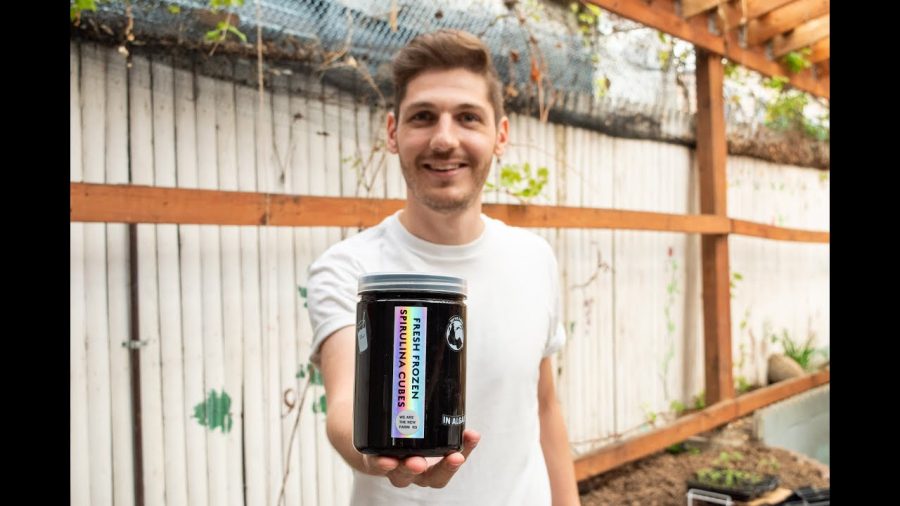With Earth Day just around the corner, climate activists across the globe have started to remind us of the individual actions we can take to address climate change, particularly eating more sustainably. Yet our current eating habits and fixation on superfoods like quinoa and avocados have manifested unsustainable practices of cultivation that ignite the flames of the climate crisis.
Luckily, there’s a food that has struck the perfect balance between sustainability and nutrition, and an alumnus of NYU Tandon has figured out a way to grow it in their own backyard.
Jonas Guenther is the co-founder of We Are the New Farmers, an urban farm in Sunset Park that grows and sells fresh spirulina.
Spirulina is a type of microalgae that naturally spawns in lakes in Central Mexico and West Africa and is known for its rich nutrient density. At 3.6 billion years old, spirulina is also one of the oldest microorganisms in the world.
But what makes spirulina stand out from the rest is its sustainability factor. Spirulina requires 19 times less carbon dioxide to produce the same amount of protein as beef and uses less water and land than tofu, making it one of the most environmentally sustainable crops in the world.
Guenther recognized the microalgae’s potential in the basement of MakerSpace at NYU Tandon while he was pursuing his Master’s. After graduating in 2018, Guenther, along with Michael Udovich and Daniel Bernstein, founded We Are the New Farmers. I had the opportunity to speak with Guenther over Zoom to learn more about spirulina and his vision to change the way we eat.
Gabby: What is spirulina?
Guenther: Spirulina is a microalga [that people take as a] nutrient supplement. You can go online, walk into your grocery store and see a dark green powder and you can add it to your smoothies or juices. We’ve developed technology at NYU to grow spirulina pretty much anywhere, and we’ve grown it in New York City, right here in Brooklyn. Our product is fresh and the nutrients are much more available, and most importantly, it tastes a lot better.

Gabby: Can you elaborate on the sustainability aspect of spirulina?
Guenther: Microalgae have an enormous potential [to bring the carbon footprint down]. They barely need any resources to grow because their metabolisms are so old. The growth cycle is fast, which means the energy put into cultivating it is much lower. And lastly, the key to all of this is [spirulina] needs a lot of carbon to grow so it can absorb CO2.
Gabby: What made you want to grow spirulina at NYU?
Guenther: When we started I was still trying to find a way to grow food that [would] lower carbon footprint and [had] high nutritional content, and vertical farms seemed to be very promising at the time. It was an idea I had in my head and I immediately got in touch with other people working in the MakerSpace. We were building this crop and my friend introduced me to microalgae and that was my starting point to get into microalgae.
Gabby: How do you grow spirulina?
Guenther: We build these shallow tanks and store them at 90 degrees Fahrenheit and then you have algae culture inside. What happens over time is the culture gets denser and gets darker in color, almost like a pond with a few algae to more algae. Once the culture is condensed enough, we use a fine filter to filter out the microalgae and rinse the product and that’s what we end up selling.

Gabby: This product sounds great because it can improve our health and the health of the planet. But, it’s rather expensive, at least for a college student. Who are your primary customers and do you plan on making the product more affordable?
Guenther: The overall goal for us to lower the price to make microalgae more available for a wider audience to use. [You] also have to bear in mind we operate on a 1,200 square footprint [facility]. That’s like a small classroom at NYU. We’re operating on a very small scale, but as we scale up the product, cost will come down. And that’s what we’re banking on.
Gabby: How did the pandemic impact your business?
Guenther: Initially, it was a shock [and] a roller coaster. At the same time, we also saw an interest in local foods. I think there was a growing awareness about the fewer people touch your food, the safer it is. On top of that, we have a product that had nutritious properties, which people were looking for. It had good parts, it had bad parts, but I’m really looking forward to the next couple of months.
Gabby: What is your favorite way to use spirulina?
Guenther: I start my day with a smoothie, and I pay a lot of attention to the ingredients that I put in my smoothie, so I start my day off the right way. I switch up the ingredients I use in my smoothie, but my spirulina is the base.
Gabby: Do you have any advice for any NYU students who want to develop their own product or launch their own start-up?
Guenther: There’s a lot of work that goes into it but it’s also extremely fulfilling and it’s a lot of fun. You need to do your work beforehand and provide value to your customers. We wanted to create a sustainable business, but we had to learn sustainability apart from financial sustainability. If you neglect that and only focus on the carbon footprint or sustainable packaging, then you will not be successful for a long period of time.
This article has been edited for concision and clarity.
Email Gabby Lozano at [email protected].

























































































































































